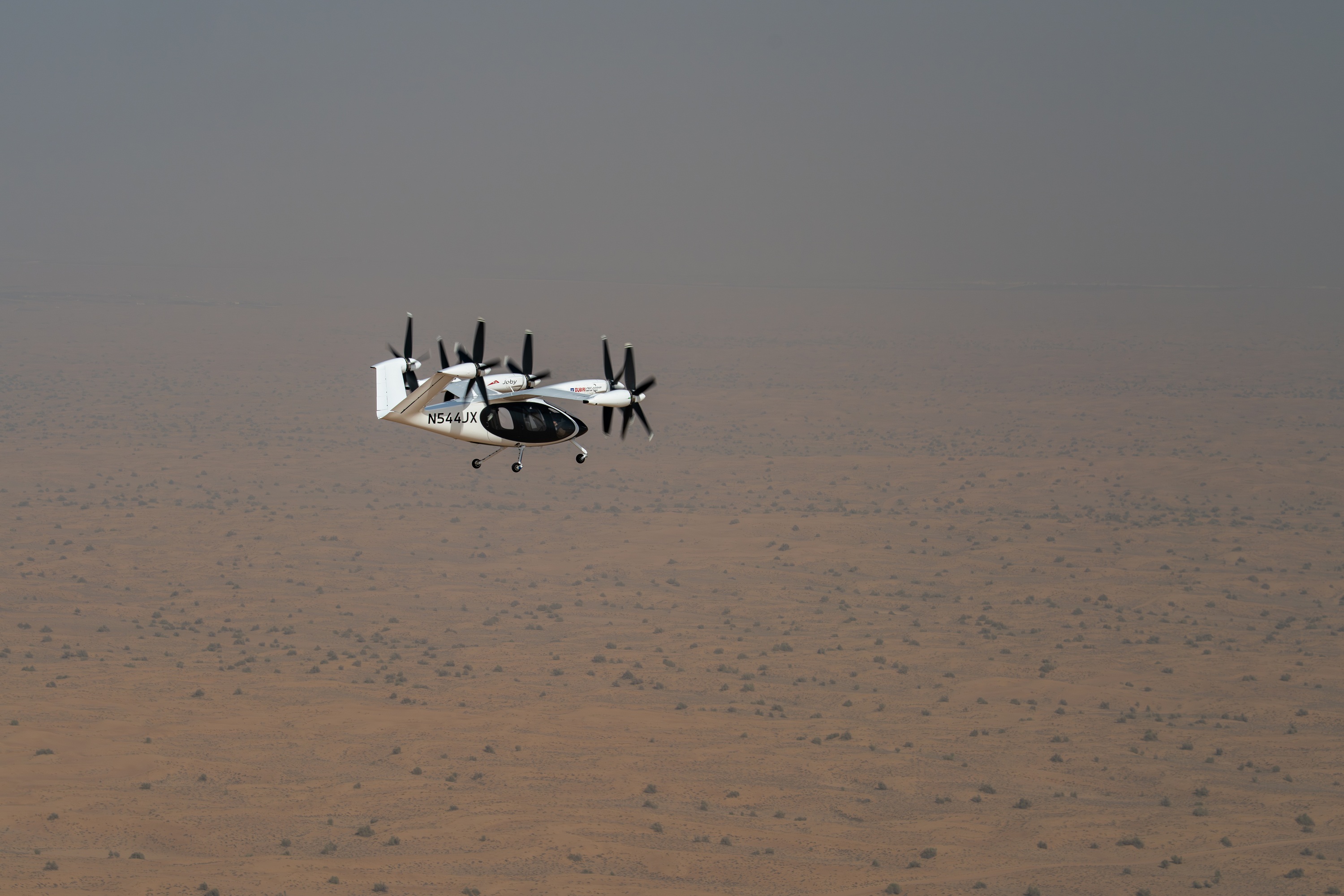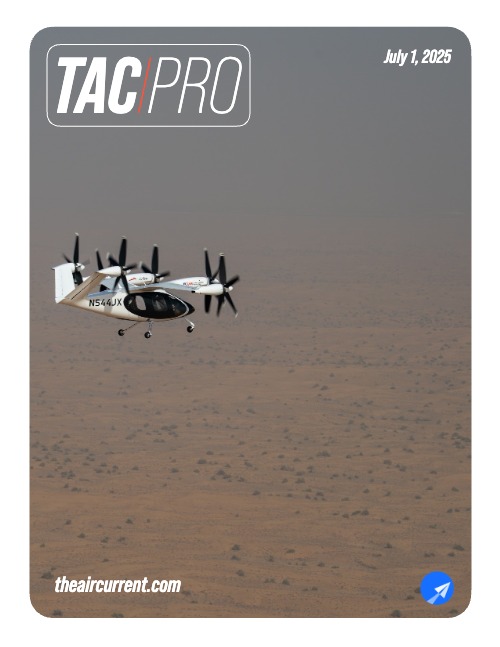Log-in here if you’re already a subscriber
On June 30, the California-based electric vertical take-off and landing developer Joby Aviation confirmed that it completed its first piloted flights in Dubai, keeping it on track to launch passenger service in the Emirate by 2026. These initial test flights were conducted in an unpopulated desert testing area away from Dubai city in temperatures of around 100 F (38 C) — well shy of Dubai’s record high of 122 F (50 C), but still plenty hot by most standards.
There are many challenges involved in launching eVTOL air taxi service in a place like Dubai, and passenger comfort is one of them. Even in conventionally powered helicopters, air conditioning systems can add enough weight to significantly impact payload and performance, and many helicopter operators who are not primarily focused on passenger transport do without. Dispensing with AC is not a viable option for Joby, which aims to compete with climate-controlled ground vehicles for trips between Dubai International Airport, Palm Jumeirah, Dubai Marina and Dubai Downtown.
Related: With ample cash, Joby and Archer embrace Plan B for eVTOL launch
Weight is even more of a concern for eVTOLs that are burdened with heavy batteries, and most existing AC systems for small aircraft use belt-driven compressors designed for internal combustion engines. For these reasons, “we knew pretty early that we were going to have to do something a bit different, and automotive faced the same challenge 15-ish years ago when they went to make the first electric car,” said Jon Wagner, Joby’s powertrain and electronics lead, in an interview with The Air Current.
Joby ultimately designed its own cabin thermal management system, which is now installed on the eVTOL it is flying in Dubai and will feature on its production aircraft. It is similar to the highly efficient heat pump system that Tesla developed for the Model Y, but is optimized for aviation — putting a spotlight on Joby’s high level of vertical integration and how that strategy has allowed it to engineer creative solutions for some of the nascent eVTOL industry’s toughest problems.
Subscribe to continue reading...Subscribe to Continue Reading
Our award-winning aerospace reporting combines the highest standards of journalism with the level of technical detail and rigor expected by a sophisticated industry audience.
- Exclusive reporting and analysis on the strategy and technology of flying
- Full access to our archive of industry intelligence
- We respect your time; everything we publish earns your attention


